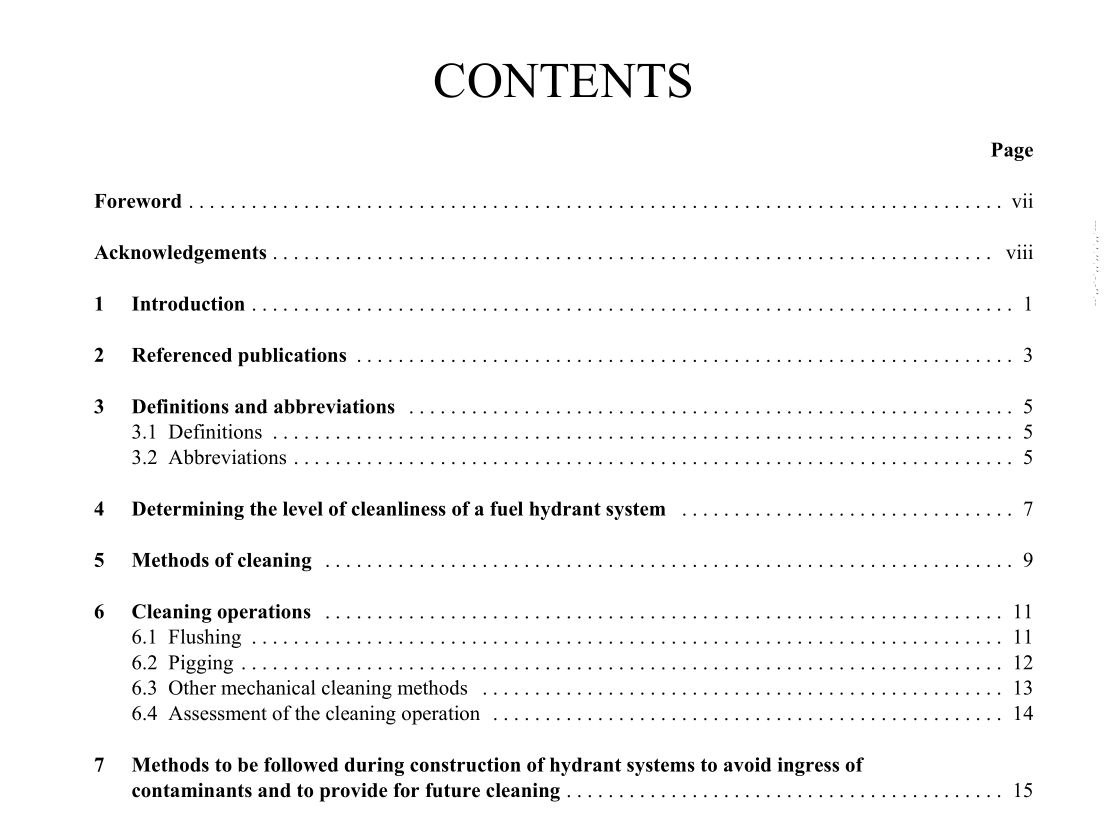API IP 1585 pdf download

API IP 1585 pdf download.GUIDANCE IN THE CLEANING OF AIRPORT HYDRANT SYSTEMS
4.1 It is not always obvious that there is a dirt or water problem within a hydrant system. Experience has shown that despite clean samples being obtained from low points and pit valves, systems can be contaminated with particulate matter, free water, construction debris or microbiological material, or a combination of these. 4.2 Into-plane operators should be encouraged to report to the hydrant operator, any less than satisfactory samples taken during or after fuelling. It is incumbent on the hydrant operator to properly investigate such reports without undue delay. With the use of fuel filter monitors in fuelling vehicles, the condition of the hydrant fuel is that shown on samples taken from the inlet side of the vessel, as this fuel has not passed through the on-board filter. 4.3 Into-plane operators may experience slugs of water and sediment but later sampling by the hydrant operator may not identify the presence of such material. Monitoring the sumps of into-hydrant filter water separators and other points, from which water and solids can be detected and removed, should be meticulously carried out at a frequency that accords with industry agreed procedures. The presence of water should be investigated to find the source.4.4 When taking low point and hydrant pit valve flushing samples, especially if a contamination problem is being investigated, the initial quantity of fuel flushed should be visually checked for the presence of any solids or water droplets before these are flushed into the tank of the servicing vehicle or unit. The vehicle pipework system should be designed to facilitate the examination of the samples flushed from the low point. Frequent inspection of the flushing tank should be carried out to check on contents. If an unusual amount of particulate and water is noted, the records should be checked to see which other low points and pit valves have been flushed. Repeat flushing of some pits to determine which have produced the material may be required. 4.5 If less than normal element life in into-hydrant filters is experienced, or depot tank samples or inspections show evidence of unusual sediment, particulate or water, the matter should be investigated. If necessary, the fuel supplier should be notified. 4.6 When circulation of the hydrant system back to depot tanks is undertaken, the condition of the tank before and after should be noted. Any increase in sediment or water will indicate that the hydrant system contained such material. Further action should be assessed.4.7 One difficulty in assessing the condition of a hydrant system is lack of entry capability. It is recommended that whenever major work is undertaken and, for example, block or sectioning valves are removed, the inside of the pipework should be examined as far as is practicable. For this adequate lighting will be required and all due precautions taken to ensure safe working conditions and equipment. A record should be made of the examination including the cleanliness or otherwise of the pipe. 4.8 Closed circuit television (CCTV) survey can be a very helpful tool in determining the state of the hydrant system. One benefit of CCTV is that it shows the current condition and, by recording this on videotape, a visual record of the condition of the system checked can be established. This may be useful in assessing the build up of unwanted material over a period. Note: CCTV technology may be of limited availability in some regions. If CCTV is to be used, it must be suitable for the conditions that will be encountered (in flammable liquids, atmosphere etc.).









